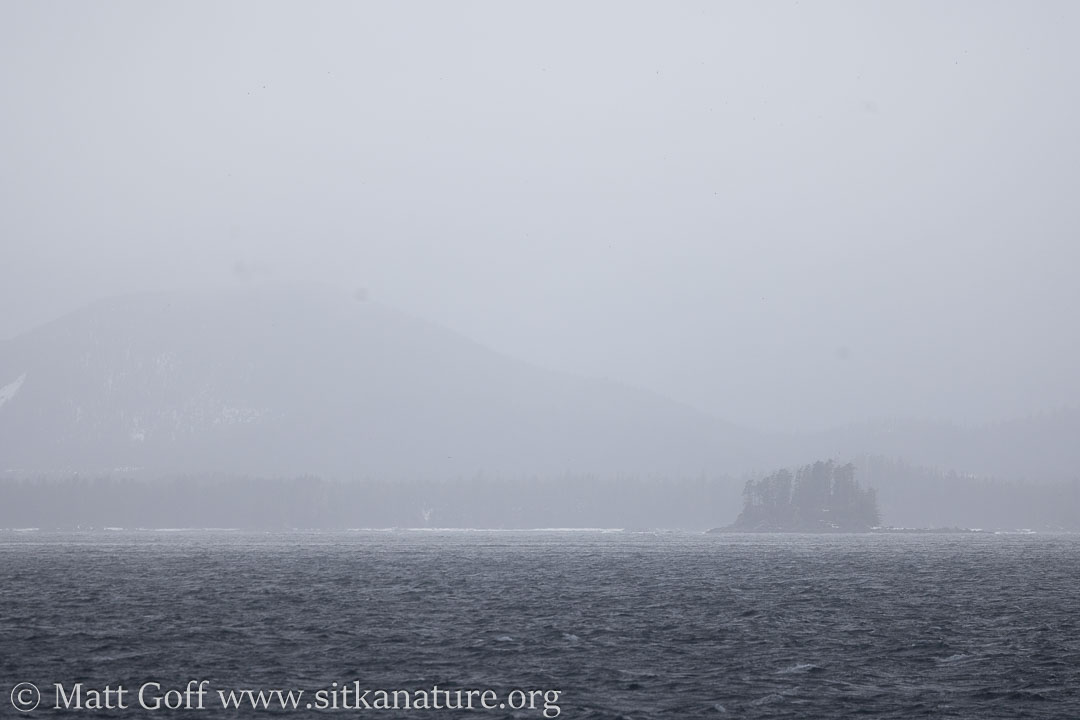Windy and rainy, temperatures up to the low 40s.
March got off to a fierce start.
Slush on the ground this morning suggested the light snow late last night may have become heavier before giving way to rain this morning.
I didn’t notice the winds at my house until late in the morning when they shifted more to south and southwest. Earlier it had been gusty, but more out of the southeast.
Peak gusts appeared to be late this afternoon and early evening at over 50 miles per hour.
Waves at the buoy got to over 34 feet this evening. With the direction out of the WSW, it may mean Sandy Beach will be seeing some big surf.
I went for a drive out as far as Kerr Island this afternoon. I did not see many birds on the water. Plenty of white caps, though.
At the kelp patch pullout, I did get a brief look at the White-throated Sparrow. It didn’t stay long, and I wasn’t able to get photos. I’ve seen it several times through the winter, but only sporadically.
This evening the UCSC field course students gave presentations at the Science Center. I attended.
Students only have a month to do their data collection and analysis, so of necessity the projects need to be relatively simple. One group looked at difference in two taxa of Fucus. I think they’ve been considered subspecies in the past, but it may be they are being elevated to species. (I had heard about this, but results are yet to propogate to iNaturalist.)
Based on what they said, it seems like it shouldn’t be too difficult to differentiate the species in most cases. Time will tell.
Others looked at interactions between predators and prey. In one case predators were tidepool sculpins (Oligocottus maculosus) and prey were yellow shore crabs (Hemigrapsus oregonensis). This surprised me because the sculpin is relatively small. It’s hard to see how they could get a normal sized shore crab in their mouth. The other combinations used sea stars (various species) and urchins (either red or green).
One group talked a bit about eelgrass wasting disease. I don’t remember hearing about it. They described the cause as a slime mold, which surprised me. Looking it up, the cause is Labyrinthula zosterae. Relying on the wikipedia article, Labyrinthula were originally thought to be slime molds, they are now understood to be in a different protist group within the phylum Bigyra.


